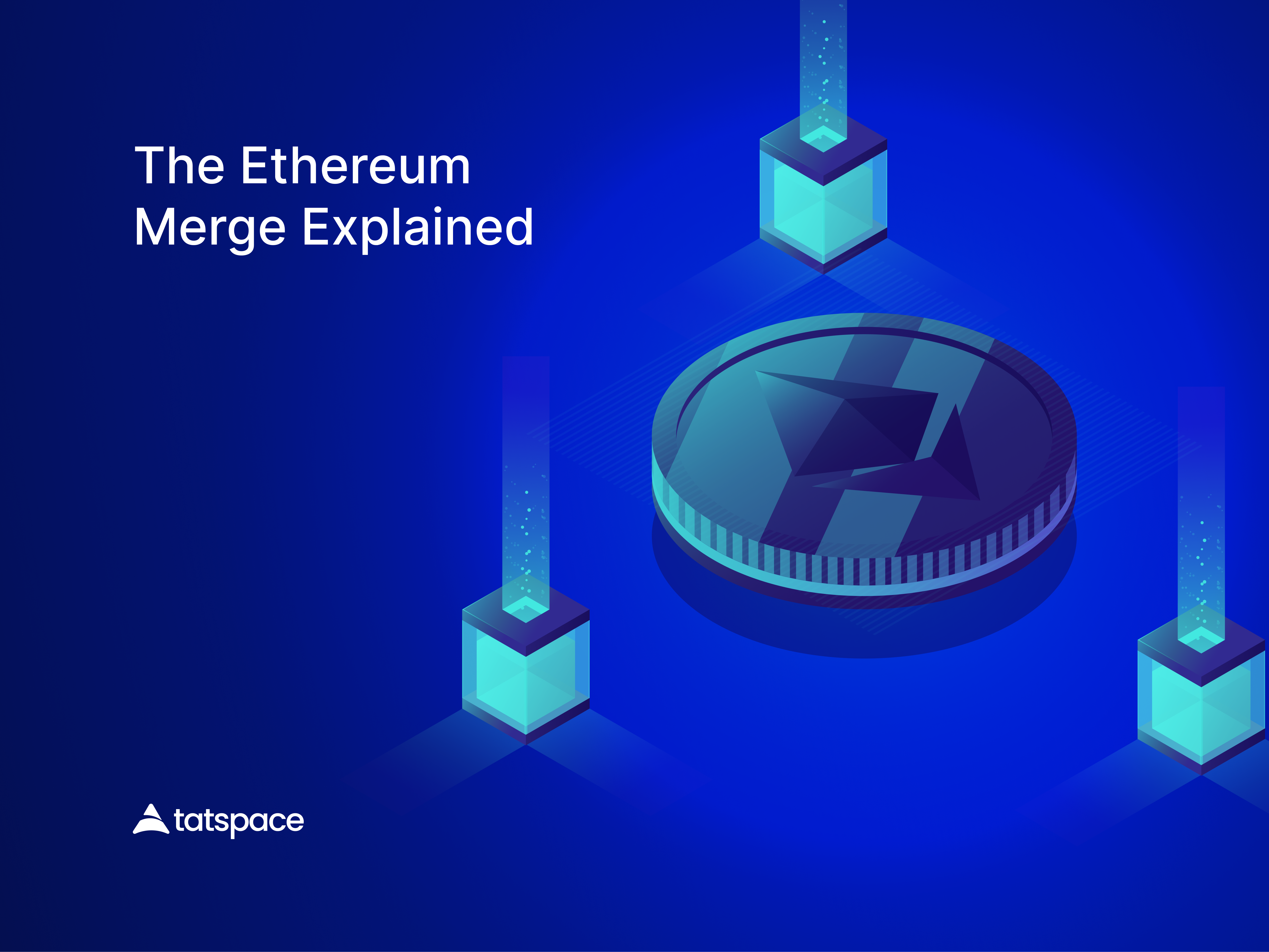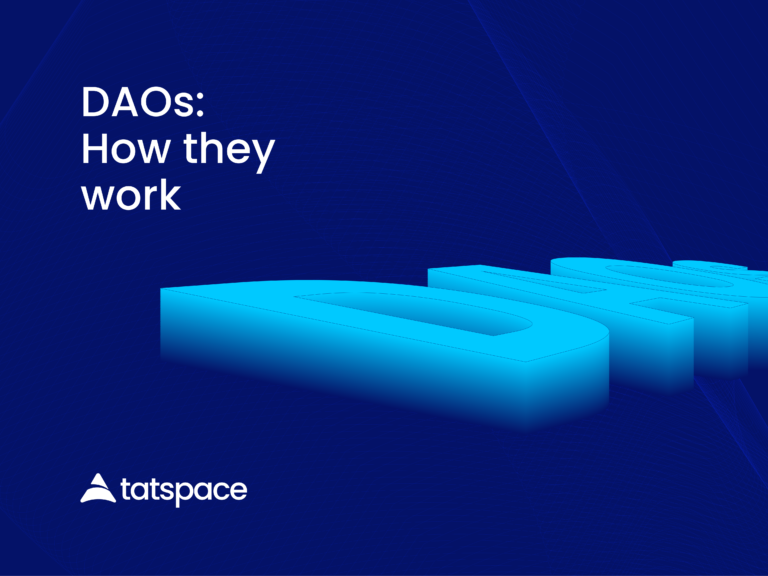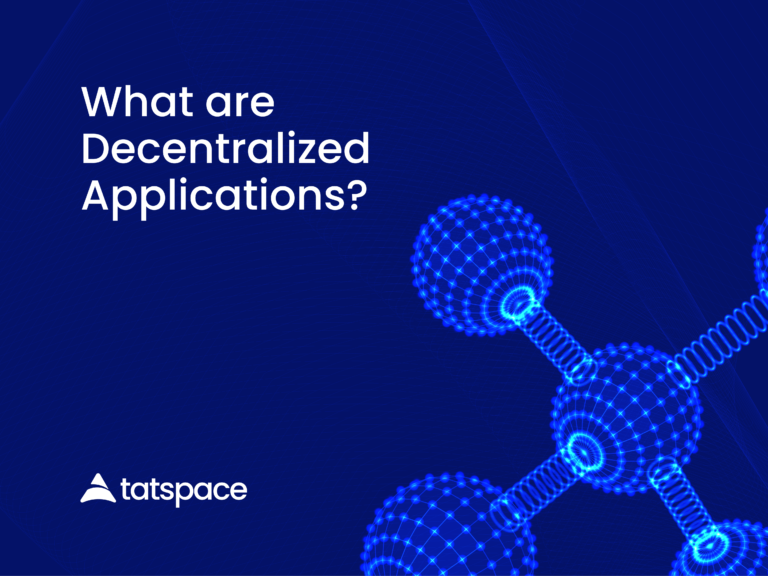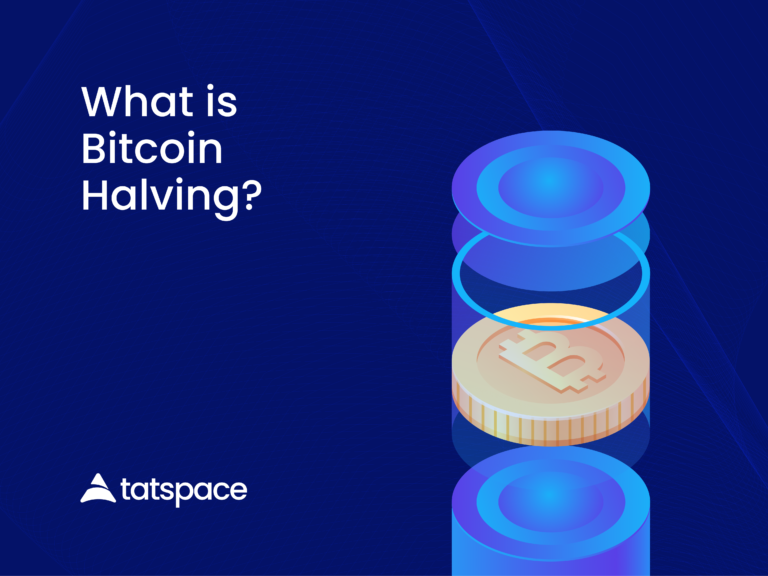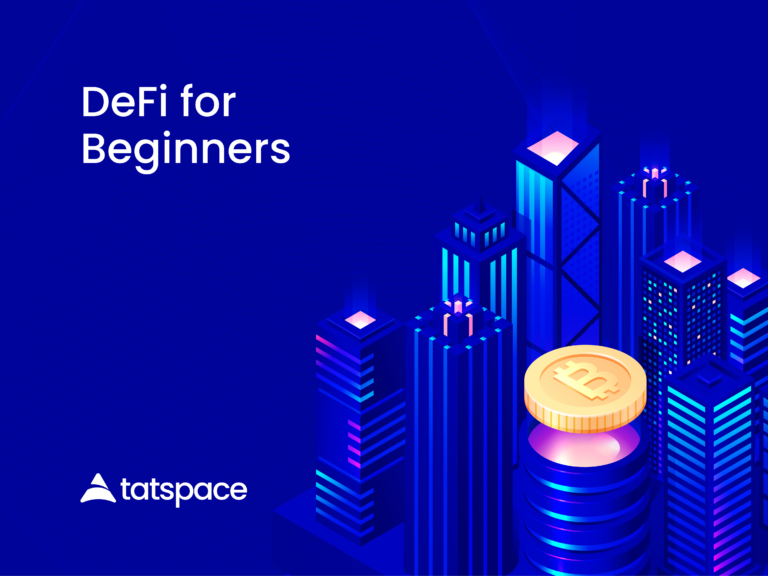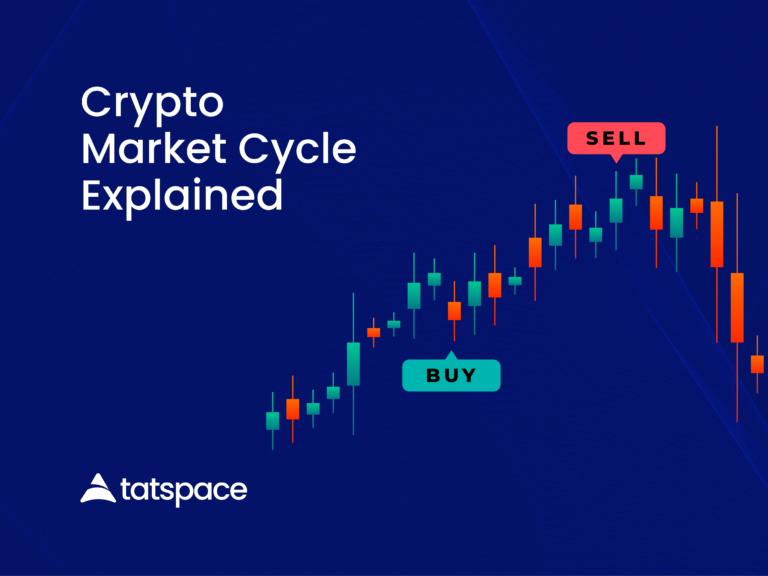At this time, the Ethereum Blockchain reaches consensus through the use of a Proof of Work consensus algorithm. This mechanism is very efficient in terms of network security. It is also very accessible, considering that anyone with access to a good computer and steady power supply can easily join the network. However, the network is highly inefficient in terms of the amount of energy it consumes. This is about to change soon with the upcoming transition to Proof of Stake. The process of doing this is what we call The Merge, or The Ethereum Merge.
Currently, the Ethereum Blockchain emits nearly the same energy as Finland, a country of about 5.55 million people. This is way awful, if you ask some climate sympathizers. Thus, Ethereum needs the Merge more than anything at this point.
Explaining The Ethereum Merge
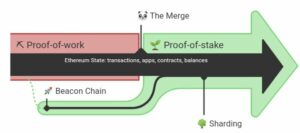
It is called The Merge because the transition does not involve changing the entire Ethereum network to a totally different one. Rather, it will oversee the coming together of the Ethereum mainnet with the PoS Blockchain already in place – the Beacon Chain. Thus, the Ethereum network Merge will join the original Ethereum Mainnet with the new Beacon Chain. This Beacon Chain refers to the PoS version of Ethereum which has been running alongside the PoW version since December 1st, 2020.
When this new chain is fully in charge of network consensus, it will eliminate the need for intensive energy consumption in use by the current network. In fact, it will cut energy usage by 99.99%! The security of this new network will be dependent on participants’ ETH staking. In addition, it will make scaling Ethereum much simpler. It will also ensure the sustainability of the network long term.
The Beacon Chain does not produce blocks for the network at this point. It only lets participating validator nodes reach consensus among themselves. The Proof of Work Ethereum Mainnet continues to produce the blocks at this time. But at the Merge, these two systems will come together as one chain. The PoS will then take over the duty of proposing blocks for Ethereum blockchain. This will permanently retire the PoW algorithm from doing so.
This replacement will make The Proof of Work Consensus obsolete on Ethereum. However, the existing accounts, balances, smart contracts and blockchain state will stay in place. All will be running fully on the new Proof of Stake consensus blockchain.
A brief Analogy
Think of this Merge as switching your building’s source of power supply from Nuclear energy to Solar Energy in a millisecond. You go from your house being powered by nuclear sources in one second to it being powered by Solar sources the next second. Simply by pulling, pushing or pressing a switch.
Not even your neighbours notices when you made the switch, but soon, everyone observes that your energy consumption is now eco-friendly. You no longer have need for the nuclear energy source, so it’s discarded. Everyone is happy and the environment is safer.
Similarly, the Ethereum Beacon Chain will become Ethereum’s consensus engine for all network data without an exception. Thus, the Ethereum Merge is an official switch from the mainnet to the Beacon Chain as the engine for block production. Instead of miners, validators (stakers) will take over the responsibility of validating transactions and producing new blocks for the network. The entire transaction history on the Ethereum network will remain in place.
What is the Date for the Merge?
According to estimations among Ethereum developers, the Merge will take place sometime in September 2022. The 19th of September is set as a possible soft deadline for this to happen. Meanwhile, developers are working around the clock to ensure the Merge takes place as soon as possible.
The new era of Ethereum being an eco-friendly and sustainable blockchain will begin after the Merge. At its inception, the Proof of Work Ethereum blockchain will become a thing of the past. It will go away with all its impediments against an environmental friendly network.
The Proof of Stake Ethereum Blockchain will prepare the ground for upgrades that will increase the network’s ability to scale transactions. This draws Ethereum a step closer to actualizing its goal of being fully scalable, secure and sustainable.
What happens to eth1 and eth2?
There will no longer be eth1 and eth2 after the Merge. Both will by then be merged into a single chain. Instead of having two distinct networks running parallel to each other, there will only be one Ethereum Blockchain.
The old eth1, without its PoW attribute, will become the new network’s execution layer. This is simply a term for the part of a blockchain that handles network transactions and performance. Eth2, which is the current Beacon Chain, will start handling network consensus using PoS algorithm. Together, they both make up the new Ethereum Blockchain.
Notable Points about the Ethereum Merge
1. The PoS Beacon Chain has been running parallel to the Ethereum PoW Mainnet since 1st December 2020. However, It has not being creating blocks for the network since its inception. It currently focuses on reaching consensus among validators.
2. The Merge is simply a formal adoption of this Beacon Chain as the chief consensus layer for Ethereum. Mining will no longer be a valid way to produce blocks for Ethereum blockchain after the Merge. This will become the work of validators who earn the right to participate in consensus by staking ether.
3. Further upgrades for the scalability of the Ethereum network will come much later after the Merge. Meanwhile, there are successful layer 2 technologies that are already helping scale transactions on Ethereum. Users are admonished to continue to make use of these after the Merge.
4. On the new PoS Ethereum Blockchain, it is totally free for anyone to run their own node without staking ETH. However, staking 32 ETH per node is necessary for nodes to participate in block production and validations.
Myths and Facts about the Ethereum Merge
Contrary to some believe, the Merge will not reduce Ethereum gas fees, nor will it make transactions faster. Its purpose is not to expand the network’s capacity. But it will set the stage for this to be done later on.
There will only be a very slight change in the time it takes to produce one Ethereum block. Currently, this sits at about 13 seconds. After the Merge, it will be around 12 seconds. The impact is insignificant. But gas fees will continue to be determined by the amount of congestion on the network at a given time. Until Sharding comes. This is an upcoming upgrade to the network that will resolve these issues.
There is also an ongoing speculation that Ethereum stakers (validators) will desert the network after the Merge. Certainly, there will be a very drastic reduction in the daily emission of ether after the merge. There is also the recent introduction of a burning mechanism that destroys 90% of ether used as gas. Both of these means that rewards for securing the network will become very small.
So, one cannot rule out the possibility of participants dropping out in droves after the Merge. However, Ethereum is built to limit the number of validators who can leave the network at a time.
Finally, the Ethereum Merge will not result in any downtimes on the network. During the Merge, Ethereum will go from using PoW to produce a block in one second to using PoS to produce the next block in the same blockchain the next second. A regular user will not even notice when this switch will happen.
Conclusion
The Merge will transform Ethereum network from being an energy consuming blockchain to being an eco-friendly one. It will position it for a highly scalable future that is more sustainable and open to all.
You as a user of services on Ethereum is not required to do anything in anticipation. Therefore, you should disregard any attempts by anyone to make you send your ether or ERC tokens to them. They are scammers. In the same vein, you do not need to connect your wallet to any dApp during the Merge. Anybody asking you to do that is attempting to scam you.

